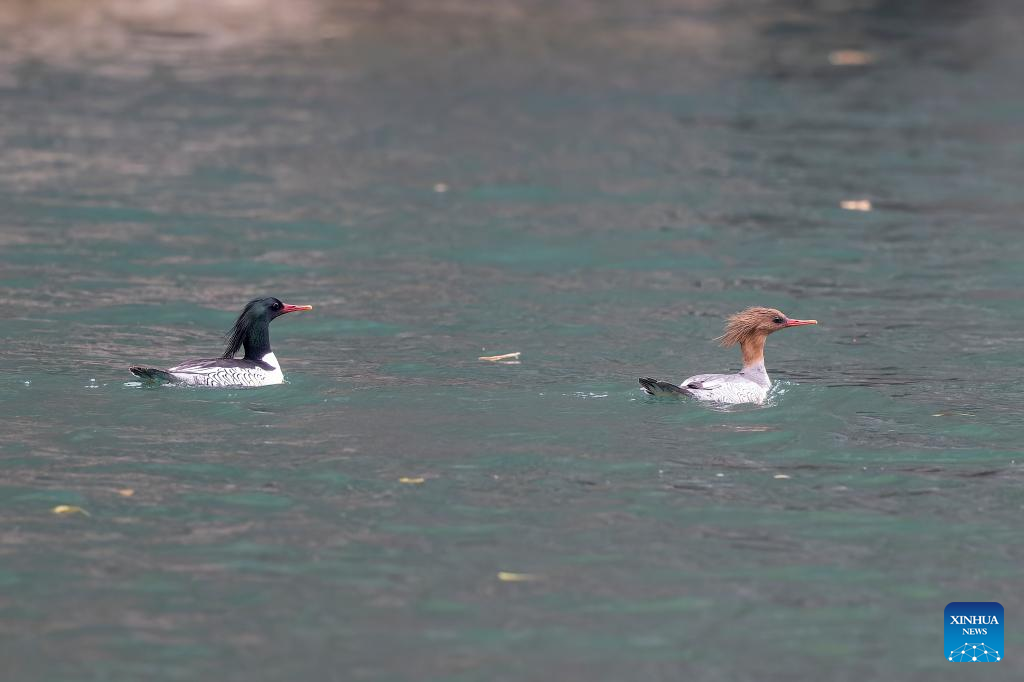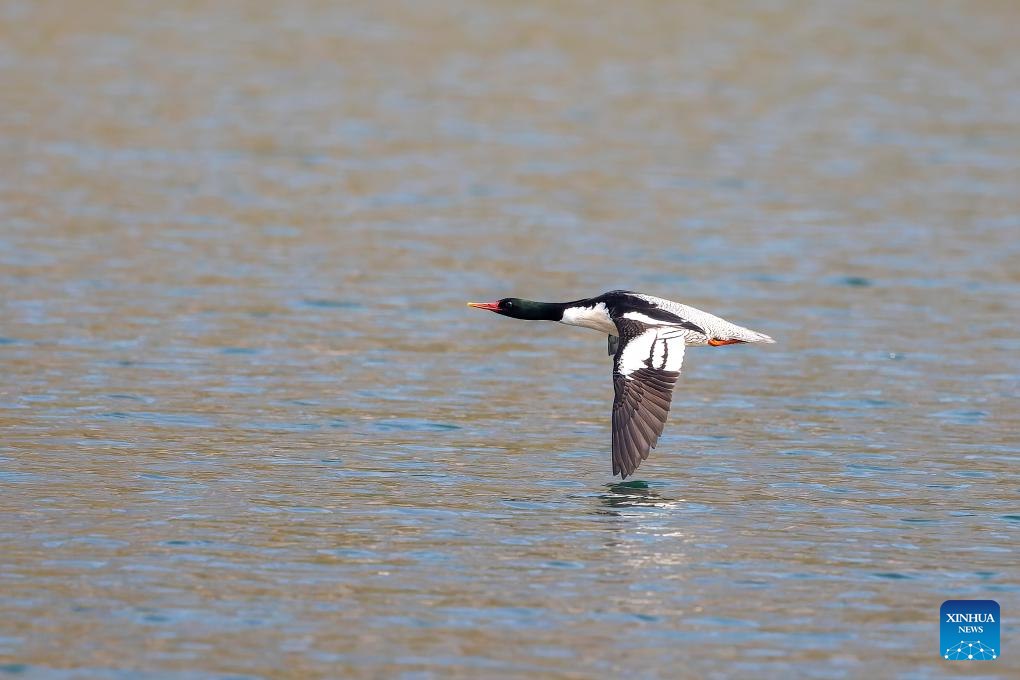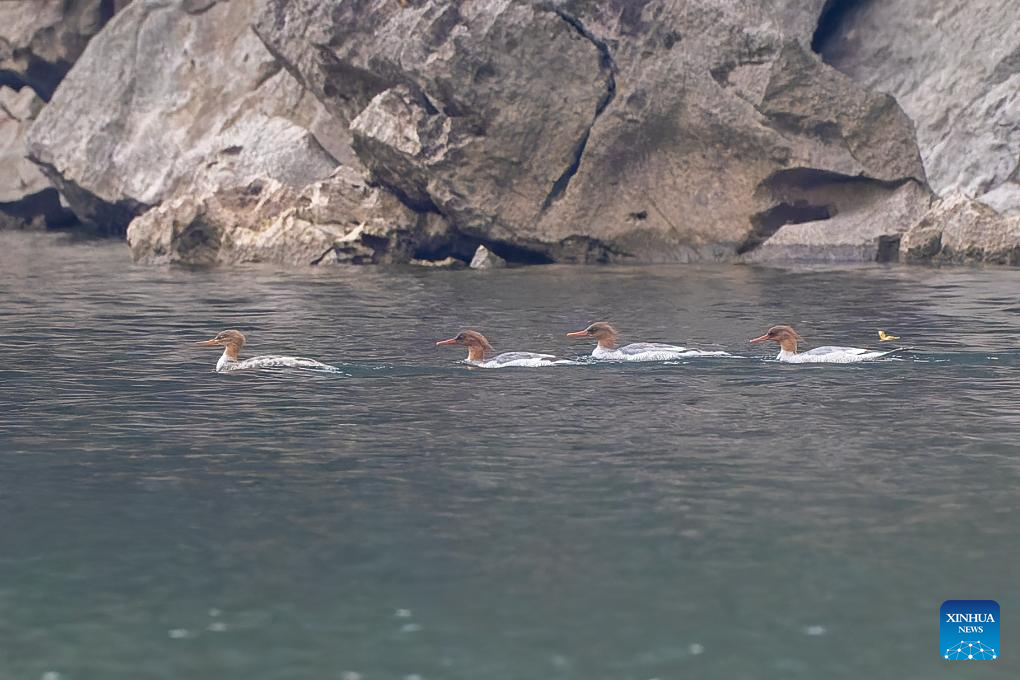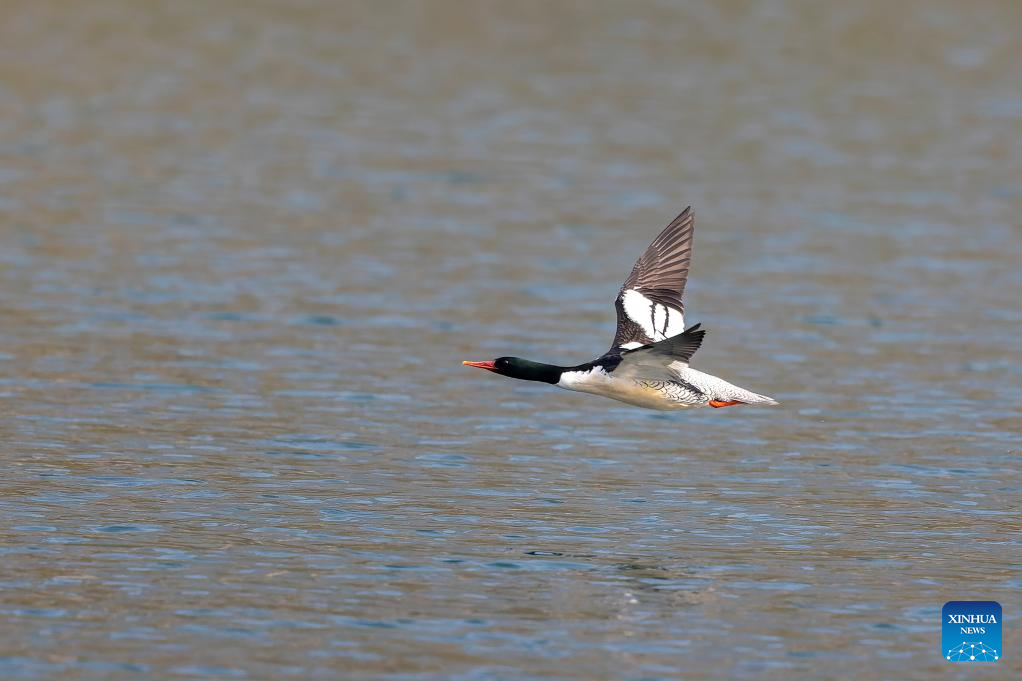
Chinese mergansers are pictured in the Beipanjiang Grand Canyon National Wetlands Park in southwest China's Guizhou Province, Jan. 6, 2024.
Fourteen Chinese mergansers, an endangered species of duck, have been discovered wintering in a wetland park in southwest China's Guizhou Province, marking the third consecutive winter sighting at the same location, according to the Guizhou provincial forest inventory and planning institute. (Guo Xuan/Guizhou Institute of Biology/Handout via Xinhua)
GUIYANG, Jan. 19 (Xinhua) -- Fourteen Chinese mergansers, an endangered species of duck, have been discovered wintering in a wetland park in southwest China's Guizhou Province, marking the third consecutive winter sighting at the same location, according to the Guizhou provincial forest inventory and planning institute.
The Chinese merganser, nicknamed "living fossils with wings," is sporadically distributed in China and under first-grade state protection. It is also listed as endangered on the International Union for Conservation of Nature's Red List of Threatened Species.
The Chinese merganser primarily feeds underwater and needs habitats with a high density of fish and good water quality. Their appearance serves as proof of the continuous improvement in the ecological environment and biodiversity of the Beipanjiang Grand Canyon National Wetlands Park, which has a total wetland area of 2,839.8 hectares.
Researchers have also spotted other bird species, such as the cormorant, pond heron and crested kingfisher, while monitoring wintering waterfowl in the park. ■

Chinese mergansers are pictured in the Beipanjiang Grand Canyon National Wetlands Park in southwest China's Guizhou Province, Jan. 6, 2024.
Fourteen Chinese mergansers, an endangered species of duck, have been discovered wintering in a wetland park in southwest China's Guizhou Province, marking the third consecutive winter sighting at the same location, according to the Guizhou provincial forest inventory and planning institute. (Guo Xuan/Guizhou Institute of Biology/Handout via Xinhua)

Chinese mergansers are pictured in the Beipanjiang Grand Canyon National Wetlands Park in southwest China's Guizhou Province, Jan. 6, 2024.
Fourteen Chinese mergansers, an endangered species of duck, have been discovered wintering in a wetland park in southwest China's Guizhou Province, marking the third consecutive winter sighting at the same location, according to the Guizhou provincial forest inventory and planning institute. (Guo Xuan/Guizhou Institute of Biology/Handout via Xinhua)

A Chinese merganser is pictured in the Beipanjiang Grand Canyon National Wetlands Park in southwest China's Guizhou Province, Jan. 6, 2024.
Fourteen Chinese mergansers, an endangered species of duck, have been discovered wintering in a wetland park in southwest China's Guizhou Province, marking the third consecutive winter sighting at the same location, according to the Guizhou provincial forest inventory and planning institute. (Guo Xuan/Guizhou Institute of Biology/Handout via Xinhua)

Chinese mergansers are pictured in the Beipanjiang Grand Canyon National Wetlands Park in southwest China's Guizhou Province, Jan. 6, 2024.
Fourteen Chinese mergansers, an endangered species of duck, have been discovered wintering in a wetland park in southwest China's Guizhou Province, marking the third consecutive winter sighting at the same location, according to the Guizhou provincial forest inventory and planning institute. (Guo Xuan/Guizhou Institute of Biology/Handout via Xinhua)

A Chinese merganser is pictured in the Beipanjiang Grand Canyon National Wetlands Park in southwest China's Guizhou Province, Jan. 6, 2024.
Fourteen Chinese mergansers, an endangered species of duck, have been discovered wintering in a wetland park in southwest China's Guizhou Province, marking the third consecutive winter sighting at the same location, according to the Guizhou provincial forest inventory and planning institute. (Guo Xuan/Guizhou Institute of Biology/Handout via Xinhua)



